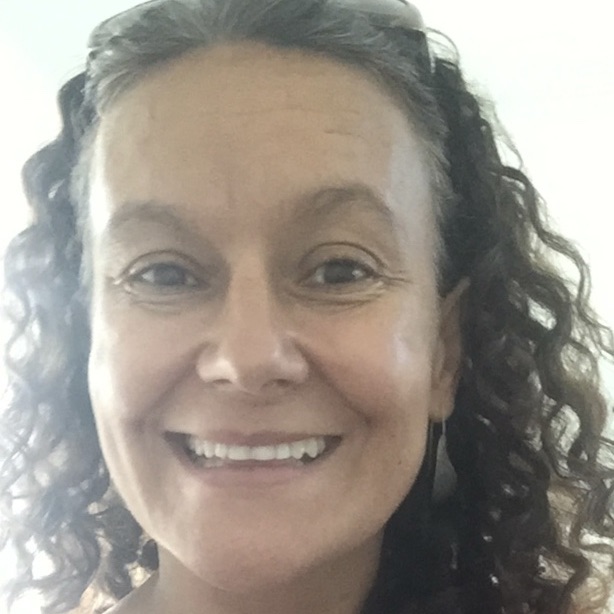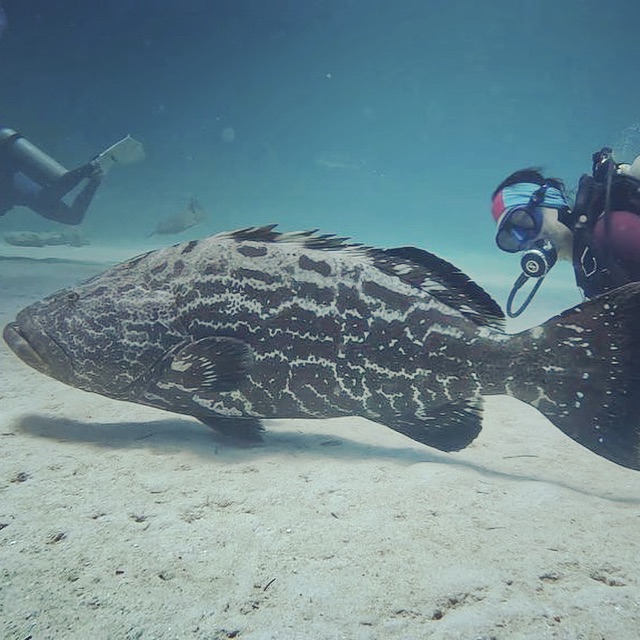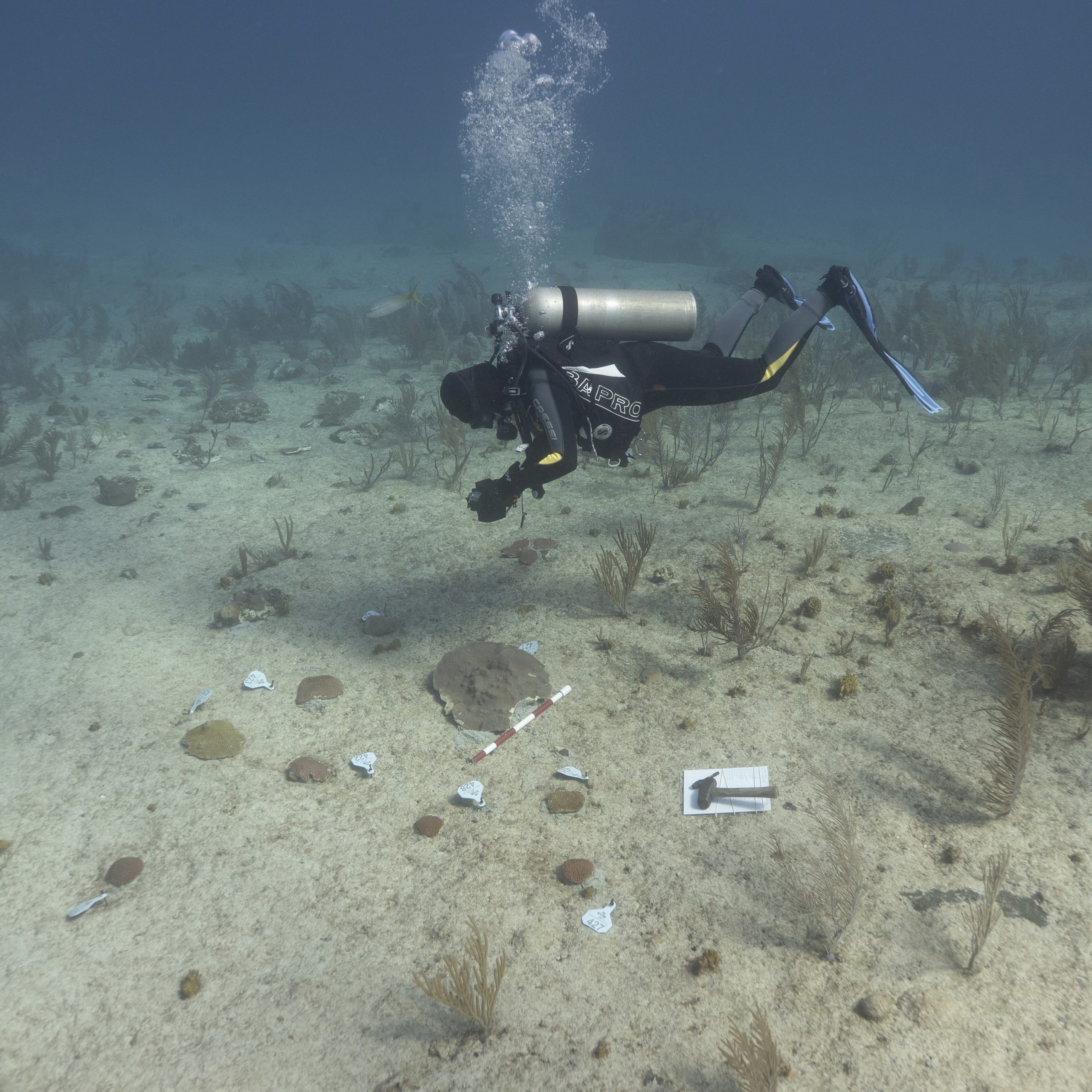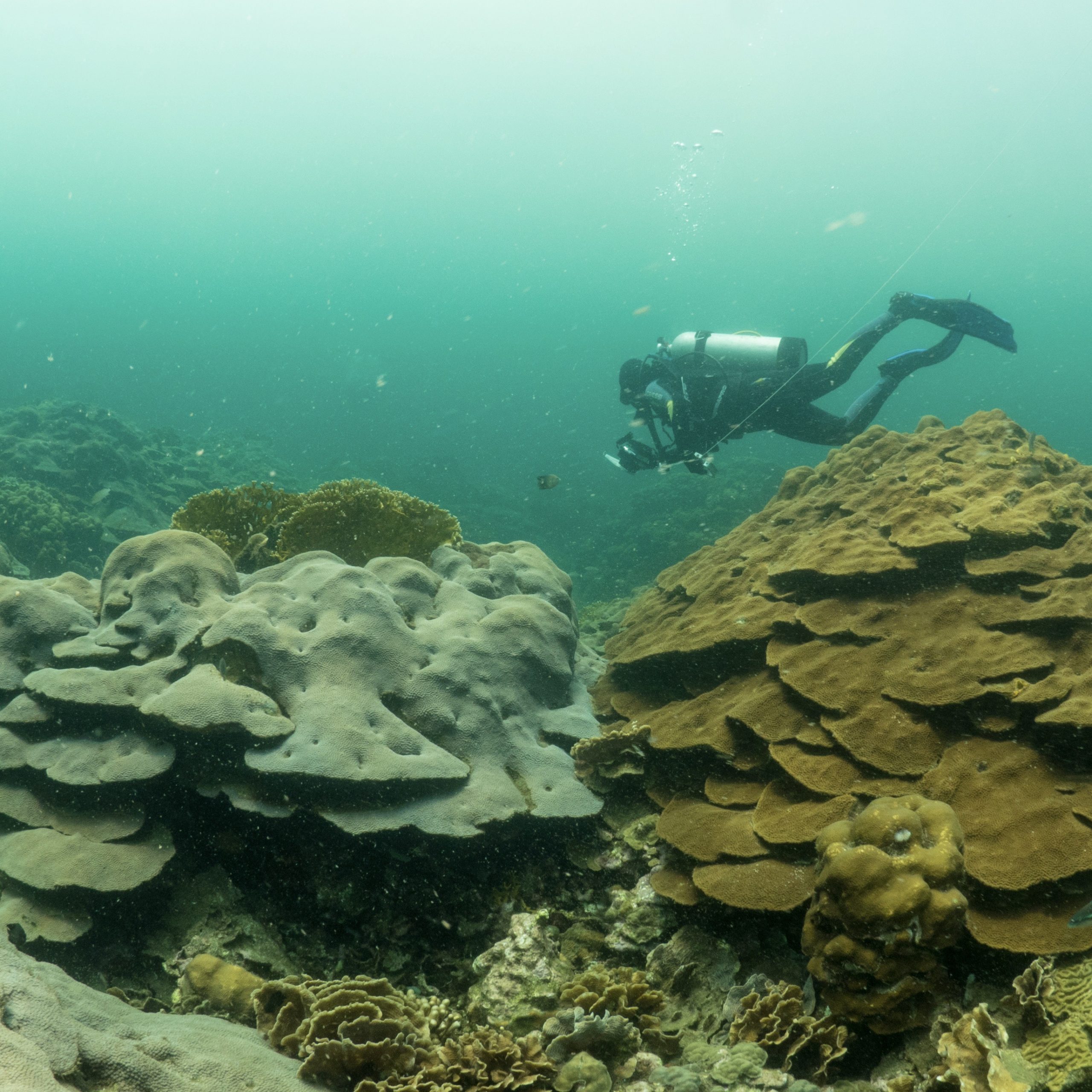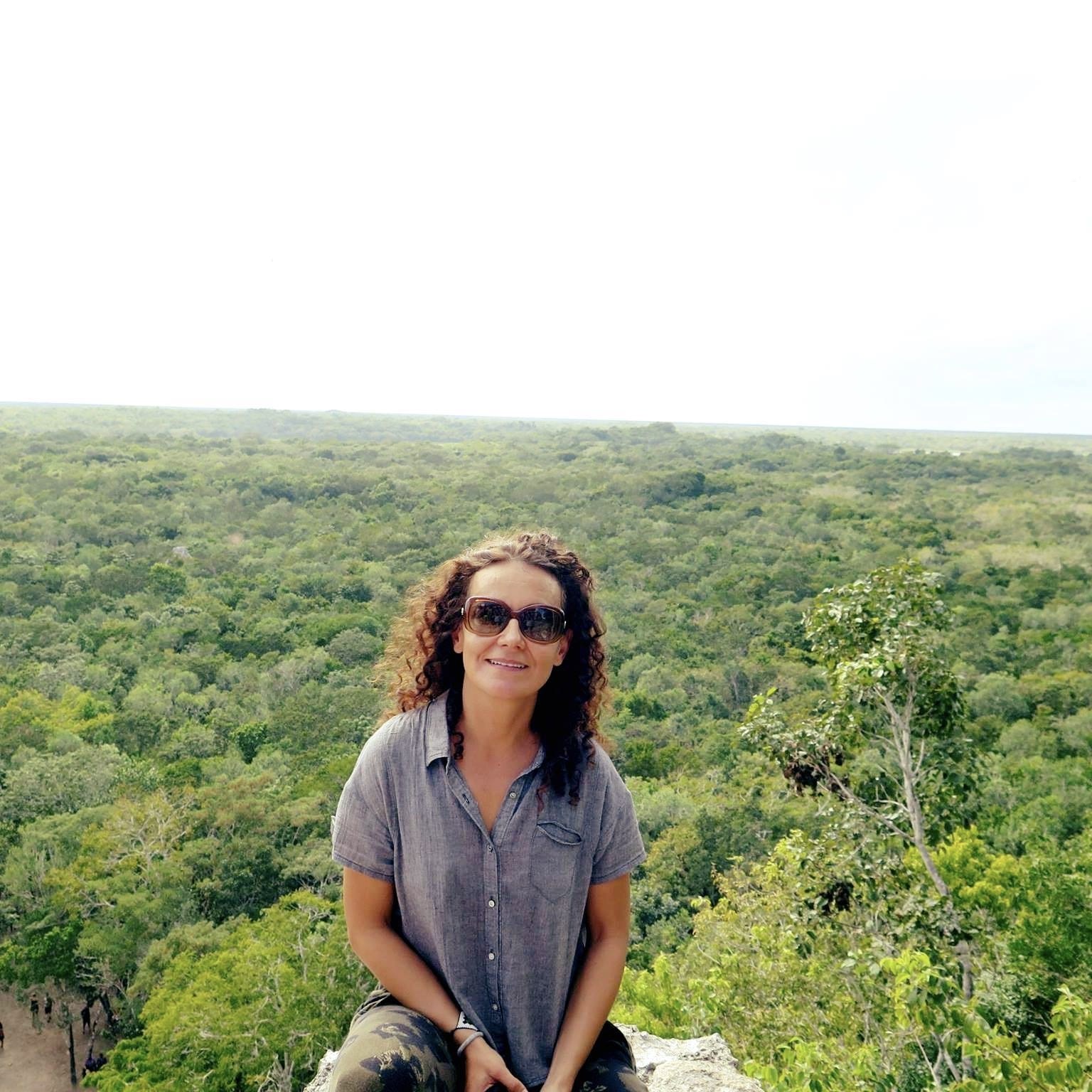


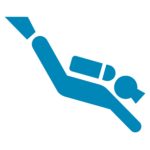
Meet Valeria Pizarro
I started studying coral reefs and brain coral population dynamics as part of my masters in 1999 in the Southwestern Caribbean (Colombia where I am from). I kept studying coral reefs while designing and implementing the Seaflower Marine Protected Area System until I began my doctorate studies at Newcastle University (United Kingdom) on Caribbean coral connectivity. After finishing my Ph.D., I became a lecturer and later a professor at the Jorge Tadeo University (Colombia) in Marine Biology, where I worked for eight years teaching undergraduates and graduate students, as well as conducting research projects in different coral reef fields. Coral restoration became part of my research field in 2007, and since then I have had projects in different coral reef areas within the Caribbean and in the Colombian Pacific. In 2020 I started working for the Perry Institute for Marine Science (PIMS) in The Bahamas as the manager of their coral program. I am involved as much as possible in all projects related to corals, but most of my time right now is focused on a coral disease that is devastating corals in the Caribbean, including The Bahamas, called Stony Coral Tissue Loss Disease (SCTLD). We are trying to tackle the spread and save as many corals as possible. Additionally, I have extensive experience on other coastal marine ecosystems such as mangroves and seagrasses. Besides coral reefs I am interested in marine policy, community engagement and biodiversity offsets.
2007 Ph.D. Biology, Newcastle University
2002 M.S. Biology with Marine Emphasis, National University of Colombia
1999 B.S. Biology, Los Andes University
Get To Know Valeria
I am originally from Colombia and have been living in The Bahamas since 2019 (with a break during the COVID pandemic). I have been studying corals and coral reefs for over 23 years, and I am still in love with them, even though I thought I was going to be a primatologist. My undergraduate studies were in biology, and I spent 8 months following a group of red howler monkeys and then a couple more months studying the only bear that lives in South America, called the spectacled bear. While studying the bear I realized I would rather study monkeys in the tropical rainforest. Right before graduating my mom took my brother and I to a Caribbean island, and we decided to do the open water diving course, and from the first dive I decided to pursue my career in marine biology. I didn’t know anything about any coastal marine ecosystems at the time, but I definitely made the right choice.
I grew up in Bogotá, which is the capital of Colombia in South America. I think that my mom influenced me by liking animals and nature. She wanted to be a biologist but at the time it wasn’t easy to study that in Colombia, especially for women. She used to buy us nature/animals related books and encyclopedias. My high school played a role as well; we used to go hiking and camping for a week to high mountains in different parts of Colombia. Finally, I would go with my dad and friends to the countryside, climb onto the rocks in the rivers, jump into the water, swim in the rivers and the sea.
If I have to write proposals or reports, it is a desk day, which is not the most exciting part of being a biologist. It usually means that I have to read scientific papers, and I really like that as it is a way to keep learning about corals and coral reefs. The fun working day for me is when I have to go into the field. 95% of the time my fieldwork days involve diving, which I love. Fieldwork days initiate the day before, getting diving gear and materials ready which usually implies many bags and carrying them to the boat. On the boat we gear up, talk to my team so everyone knows what each person is doing and emphasise safety measures. When all is ready, we jump into the water. Each dive can last between 45 to 80 minutes depending on the depth and what I have to do underwater. Usually we do between 2 and 3 dives each day and then at the end of the day I carry everything back to my place, rinse my gear and materials, and if it is early I will have time to input the data in the computer.
Many things…usually at the end of working days I like to do some exercise, reading and watching some movies. On free days, like weekends, I like to go out to a beach, walk, swim, read and take the time to cook and pamper myself. I try to share time with family and friends as much as possible.
This is a difficult one… I love corals for sure and they might be my favorite animal. They are so simple when you look at their morphology, but they are so complex in their ecology and their role in the world. But if I have to choose a mammal, I might say that otters are currently one of my favorite animals. Why? They are so beautiful and smart in their own way.
When someone learns about corals and realizes that we (humans) depend on these animals and ecosystems and then decide to commit in any way to either donate, change the way they live (reducing waste, etc.), keep learning, spread the word… and when corals keep thriving despite all the threats they are facing.
When MPAs were first designed/created, the main goal was to ensure fishing and the conservation/management of fish populations. Over the years this goal changed to include human use conflict resolution, biodiversity conservation/management, among others. With the inclusion of these other goals, having areas which are designed for specific objectives can ensure that we humans can keep enjoying the different services that the marine ecosystems provide. For example, some seagrass beds are used by lobsters during their juvenile years – these animals arrive from the open ocean to seagrass where they stay for a couple of years until they are adults. If we protect some of these seagrass areas and do not fish these young lobsters, they can grow to be adults and reproduce so we can still have lobsters in the future. To ensure the success of MPAs, every stakeholder has to be part of it one way or another, either during the planification/design stages or ensuring/following the rules for each MPA.
Yes, I have seen changes and in most ways they are very inspiring. For me two big changes have been made: (1) many, if not most, researchers are involving local communities in their projects and this is relatively new. Science used to be for scientists and didn’t take into consideration local communities, ignoring the fact that in most cases locals know their surroundings, the environment and changes, and want to be involved in projects; (2) coral restoration using ecological restoration has grown dramatically in the last couple of decades. Although we are still learning, the restoration practitioner community shares its knowledge and is willing to collaborate. Both of these changes are important because corals and coral reefs are facing many threats, and we are close to the point of losing them if we don’t work together.
This career is fascinating and challenging, but if you find something you like, you are passionate about, it will be an amazing journal in your professional life. We do much more than be out in the sea, but for sure we get to travel and see different places.
The possibility of doing something for corals, coral reefs and humanity. Nothing huge as to save them all, but to collaborate with a grain of sand with many others. I love working with colleagues and friends and seeing how hard they work and how passionate they are. And of course, thinking about the possibility of being in the water always keeps me going!
For me science is a way to understand how our world works, how everything is interconnected and how much we humans depend on nature. It has given me the opportunity to learn and understand that nothing is written in stone, that science develops theories and new findings can change them. This gives you more flexibility in your beliefs and at least for me it allows me to appreciate other people’s thinking and ideas.
Interview conducted in February 2023

